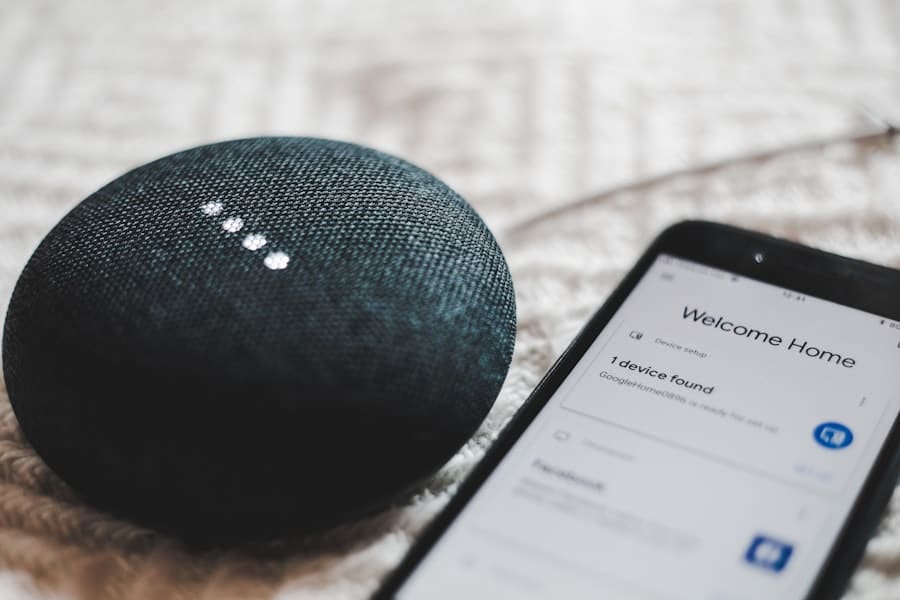The global water crisis is a pressing issue that affects millions of people worldwide, with approximately 2 billion individuals lacking access to safe drinking water. In response to this challenge, innovative technologies have emerged, among which artificial intelligence (AI) has taken a prominent role. AI-driven water purification systems leverage advanced algorithms and machine learning techniques to enhance the efficiency and effectiveness of water treatment processes.
These systems not only optimize the purification of water but also provide real-time monitoring and predictive analytics, ensuring that water quality meets safety standards. AI’s integration into water purification is a game-changer, as it allows for the automation of complex processes that were traditionally labor-intensive and time-consuming. By utilizing data from various sensors and sources, AI can analyze water quality parameters, detect contaminants, and adjust treatment methods accordingly.
This dynamic approach not only improves the reliability of water purification systems but also reduces operational costs and energy consumption. As the demand for clean water continues to rise, the role of AI in revolutionizing water purification becomes increasingly critical.
Key Takeaways
- AI-driven water purification systems use artificial intelligence to optimize the purification process and improve water quality.
- Advantages of AI-driven water purification systems include increased efficiency, reduced energy consumption, and improved water quality monitoring.
- Implementing AI-driven water purification systems in developing countries can help improve access to clean water and address water scarcity issues.
- AI-driven water purification systems have a positive environmental impact by reducing chemical usage and minimizing waste.
- Challenges and limitations of AI-driven water purification systems include high initial costs, technical expertise requirements, and potential job displacement.
Advantages of AI-Driven Water Purification Systems
One of the most significant advantages of AI-driven water purification systems is their ability to enhance operational efficiency. Traditional water treatment facilities often rely on manual monitoring and intervention, which can lead to delays in addressing contamination issues. In contrast, AI systems can continuously analyze data from sensors placed throughout the treatment process, allowing for immediate detection of anomalies.
For instance, if a sudden spike in turbidity is detected, the system can automatically adjust chemical dosing or alter filtration processes to mitigate the issue in real-time. Moreover, AI-driven systems can predict future water quality trends based on historical data and environmental factors. This predictive capability enables operators to proactively manage resources and implement preventive measures before problems arise.
For example, during periods of heavy rainfall, AI can forecast potential increases in runoff contaminants and adjust treatment protocols accordingly. This not only ensures a consistent supply of safe drinking water but also minimizes waste and reduces the need for costly emergency interventions.
Implementation of AI-Driven Water Purification Systems in Developing Countries
The implementation of AI-driven water purification systems in developing countries presents a unique opportunity to address the challenges of inadequate infrastructure and limited resources. Many regions face significant barriers to accessing clean water due to outdated technology and insufficient funding for maintenance and upgrades. By introducing AI solutions, these countries can leapfrog traditional methods and adopt more efficient practices that require less manual oversight.
For instance, in rural areas where access to skilled labor is limited, AI-driven systems can operate autonomously with minimal human intervention. These systems can be designed to function on solar power or other renewable energy sources, making them suitable for off-grid locations. A notable example is the deployment of AI-powered solar water purification units in parts of Africa, where they have successfully provided clean drinking water to communities that previously relied on contaminated sources.
The ability to monitor and adjust purification processes remotely also allows for better management of resources and reduces the burden on local operators.
Environmental Impact of AI-Driven Water Purification Systems
The environmental impact of AI-driven water purification systems is multifaceted, encompassing both positive contributions and potential challenges. On one hand, these systems can significantly reduce the ecological footprint associated with traditional water treatment methods. By optimizing chemical usage and energy consumption, AI technologies help minimize waste generation and lower greenhouse gas emissions.
For example, AI algorithms can determine the precise amount of coagulants needed for effective sedimentation, reducing excess chemical discharge into the environment. Additionally, AI-driven systems can enhance the sustainability of water resources by promoting efficient water reuse practices. Through advanced monitoring and treatment capabilities, these systems can facilitate the safe recycling of wastewater for agricultural or industrial purposes.
This not only conserves freshwater resources but also mitigates pollution by ensuring that treated wastewater meets stringent quality standards before being reintroduced into the ecosystem. However, it is essential to consider the potential risks associated with over-reliance on technology, such as system failures or cyber threats that could compromise water quality.
Challenges and Limitations of AI-Driven Water Purification Systems
Despite their numerous advantages, AI-driven water purification systems face several challenges and limitations that must be addressed for widespread adoption. One significant hurdle is the initial investment required for implementing advanced technologies. Developing countries may struggle to allocate sufficient funds for purchasing equipment, installing sensors, and training personnel to operate these systems effectively.
This financial barrier can hinder progress in regions that would benefit most from improved water purification methods. Furthermore, the reliance on data-driven decision-making raises concerns about data privacy and security. As these systems collect vast amounts of information from various sources, they become potential targets for cyberattacks that could disrupt operations or compromise sensitive data.
Ensuring robust cybersecurity measures is crucial to protect both the integrity of the water supply and the privacy of individuals within affected communities. Additionally, there is a need for ongoing research to refine AI algorithms and ensure their adaptability to diverse environmental conditions and contaminants.
Future Developments and Innovations in AI-Driven Water Purification Systems
Smart Water Networks through IoT Integration
One area of innovation is the integration of Internet of Things (IoT) devices with AI algorithms to create smart water networks. These networks can facilitate real-time communication between various components of the water treatment process, enabling seamless coordination and optimization.
Enhanced Predictive Maintenance
Another exciting development is the potential use of machine learning techniques to enhance predictive maintenance capabilities within purification systems. By analyzing historical performance data, machine learning models can identify patterns that indicate when equipment is likely to fail or require maintenance. This approach not only extends the lifespan of critical components but also minimizes downtime and ensures consistent water quality delivery.
Advancements in Filtration Methods
As research progresses, we may also see advancements in nanotechnology and materials science that lead to more efficient filtration methods capable of removing a broader range of contaminants.
Case Studies of Successful AI-Driven Water Purification Projects
Several successful case studies illustrate the transformative impact of AI-driven water purification projects around the globe. One notable example is the implementation of an AI-based monitoring system in a municipal water treatment facility in Singapore. The system utilizes machine learning algorithms to analyze data from over 100 sensors deployed throughout the plant.
By continuously monitoring parameters such as pH levels, turbidity, and microbial content, the system can optimize chemical dosing in real-time, resulting in improved water quality and reduced operational costs.
These units were equipped with sensors that monitored water quality parameters and adjusted treatment processes accordingly.
The project not only provided access to clean drinking water but also empowered local communities by training residents to operate and maintain the systems independently. The success of this initiative highlights the potential for scalable solutions that leverage local knowledge while harnessing advanced technology.
The Role of AI in Improving Access to Clean Water
As the world grapples with escalating water scarcity issues, AI-driven water purification systems emerge as a beacon of hope for enhancing access to clean drinking water. By harnessing advanced technologies such as machine learning and IoT integration, these systems offer innovative solutions that address both operational challenges and environmental concerns associated with traditional methods.
While challenges remain in terms of implementation costs and cybersecurity risks, ongoing research and development efforts are paving the way for more accessible and efficient solutions. The success stories from various projects around the globe serve as powerful examples of how AI can be harnessed to create sustainable water purification systems that meet the needs of diverse populations. As we look toward the future, it is clear that AI will play an increasingly vital role in shaping a world where clean water is not just a privilege but a fundamental right for all.
A related article discussing the latest advancements in technology can be found on Enicomp. This article explores how the Galaxy Book2 Pro 360 is revolutionizing the way we work and play with its innovative features. By staying up to date on the latest tech trends, we can continue to improve access to clean water through AI-driven water purification systems.
FAQs
What are AI-driven water purification systems?
AI-driven water purification systems are advanced water treatment technologies that use artificial intelligence (AI) to monitor and control the purification process. These systems leverage AI algorithms to optimize water treatment efficiency, reduce energy consumption, and improve overall water quality.
How do AI-driven water purification systems work?
AI-driven water purification systems use sensors and data analytics to continuously monitor water quality and adjust the purification process in real-time. By analyzing large amounts of data, AI algorithms can identify patterns and optimize the treatment process to ensure the production of clean and safe drinking water.
What are the benefits of AI-driven water purification systems?
AI-driven water purification systems offer several benefits, including improved water quality, reduced energy consumption, lower operational costs, and increased reliability. These systems also enable remote monitoring and control, which can help in addressing water quality issues in remote or underserved areas.
How are AI-driven water purification systems improving access to clean water?
AI-driven water purification systems are improving access to clean water by making water treatment more efficient, cost-effective, and reliable. These systems can be deployed in remote or resource-constrained areas to provide access to safe drinking water, thereby addressing water scarcity and public health challenges.
Are AI-driven water purification systems cost-effective?
While the initial investment in AI-driven water purification systems may be higher than traditional water treatment methods, the long-term cost savings from improved efficiency, reduced energy consumption, and lower maintenance requirements make these systems cost-effective in the long run.



